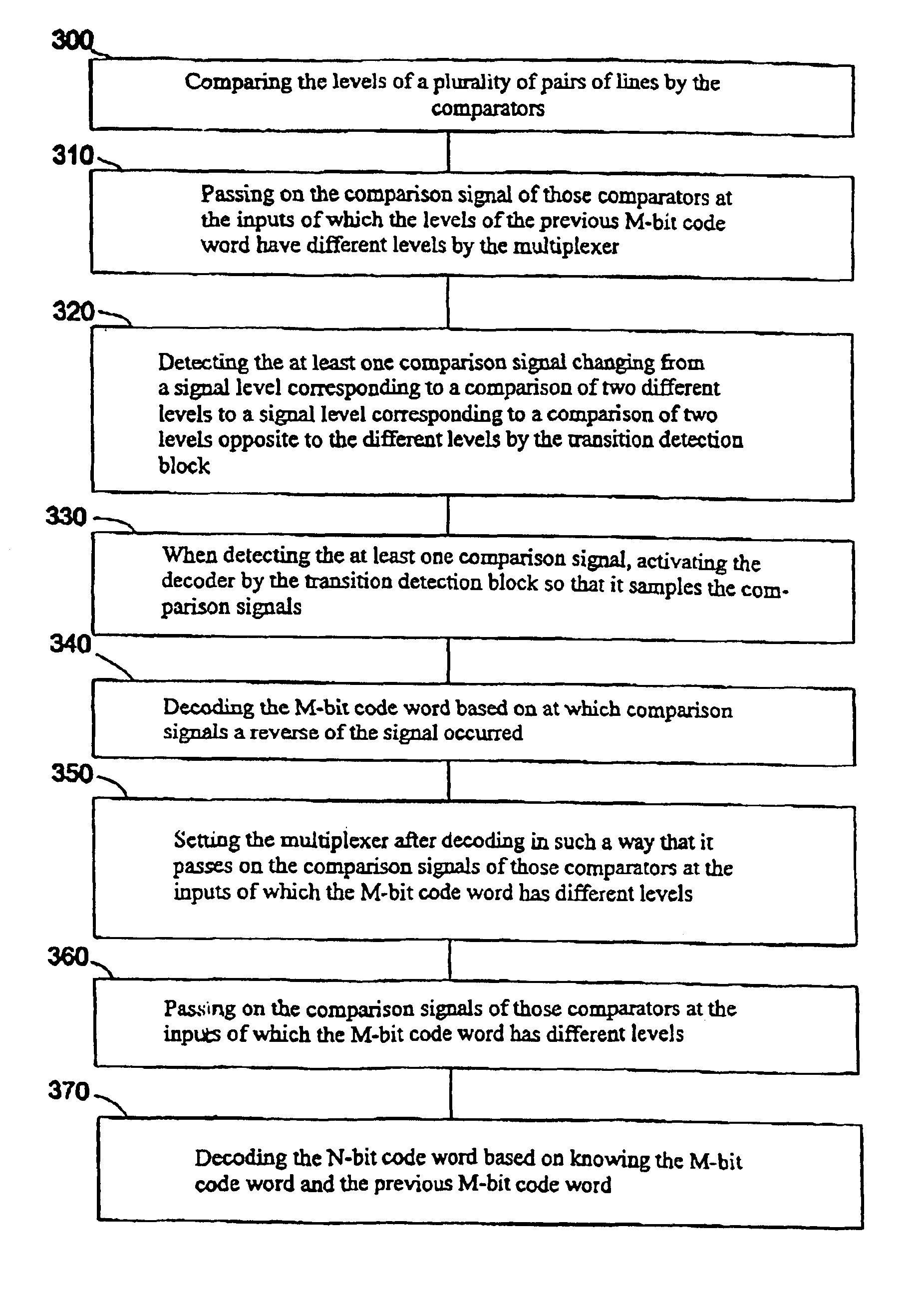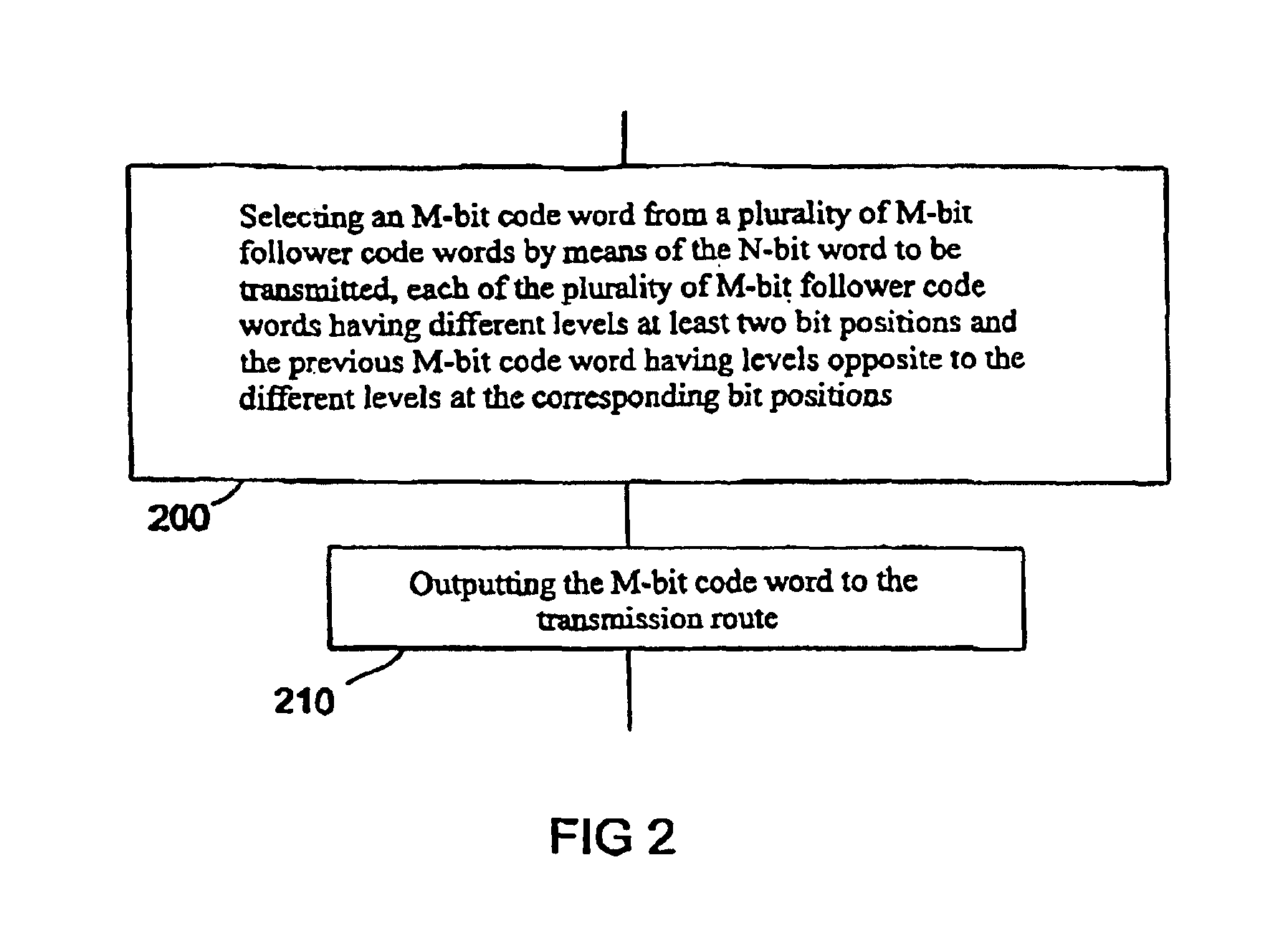Transmission and reception interface and method of data transmission
a technology of reception interface and data transmission, applied in the field of transmission and reception interface, can solve the problems of reducing the transmission speed, reducing the transmission efficiency, and reducing the transmission efficiency, and achieve the effect of faster data transmission and/or faster transmission speed
- Summary
- Abstract
- Description
- Claims
- Application Information
AI Technical Summary
Benefits of technology
Problems solved by technology
Method used
Image
Examples
Embodiment Construction
[0027]An embodiment of the present invention will be described in detail referring to FIGS. 1 to 4.
[0028]FIG. 1 shows the block diagram of an interface arrangement of a transmission interface and a reception interface according to an embodiment of the present invention, while FIGS. 2 and 3 illustrate the steps occurring in the transmission interface and the reception interface. FIG. 4 is a table listing, for a part of the code words permitted for coding, information serving for illustrating the mode of operation of the transmission and reception interface of FIG. 1.
[0029]In the following, the architecture of the interface arrangement of FIG. 1 will be explained first. The transmission interface or the sender, respectively, in general shown at 10, is connected to the reception interface or the receiver, respectively, indicated in general at 20, via a 5-bit line 30 consisting of five lines XDQ0, XDQ1, XDQ2, XDQ3 and XDQ4. The sender 10 includes a coder 40 receiving four bits DQ0, DQ1,...
PUM
 Login to View More
Login to View More Abstract
Description
Claims
Application Information
 Login to View More
Login to View More - R&D
- Intellectual Property
- Life Sciences
- Materials
- Tech Scout
- Unparalleled Data Quality
- Higher Quality Content
- 60% Fewer Hallucinations
Browse by: Latest US Patents, China's latest patents, Technical Efficacy Thesaurus, Application Domain, Technology Topic, Popular Technical Reports.
© 2025 PatSnap. All rights reserved.Legal|Privacy policy|Modern Slavery Act Transparency Statement|Sitemap|About US| Contact US: help@patsnap.com



